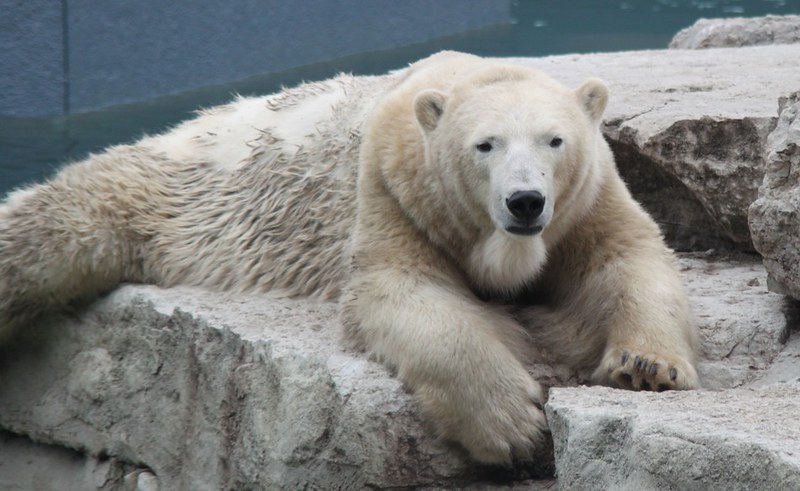
This makes them excellent swimmers: they are capable of swimming 100 kilometres (60 miles) without rest.īetween 20 researches tracked 52 female polar bears, and they found one bear that was able to swim nearly 136 kilometre (220 miles) in nearly 10 days with only short rests. The bears spend most of their lives on the ice, and in the water. Their habitat consists of areas covered by ice including the Arctic Ocean, adjacent seas, and their coastlines. To keep living in the extreme weather conditions of the Arctic, polar bears are really adapted to these harsh and frigid conditions. Polar bears can swim for 100 kilometres without rest This really was a breakthrough in this field, since footprints can be used to track family trees of bears which can help identify polar bear populations. In the lab they found three different DNA markers: one from a polar bear, seal and a seagull. The scooped one of the footprints in the snow they found and took it in a bag. In 2014 researches found out that it is possible to extract DNA from a polar bear footprint. DNA can be extracted from a polar bear footprint You can contribute to the preservation of polar bear habitats by supporting Polar Bears International > 5. As a result the population of polar bears has declined over the past years, and will continue to decrease. Also, fewer cubs are surviving the first year of their lives. Right now, it is found that polar bears give birth to fewer cubs. Researchers expect that in the end of this century we most likely will have lost most of polar bear populations. At the end of this century most of polar bear populations will be gone These are all of polar bear sub-populations as of today:Ĥ. Before that it was assumed that this population was part of the other, but it wasn’t. The most recent discovery of a new population was in 2022, where researches discovered it in Southeast Greenland. There are 20 polar bear sub-populationsĪs of today there are 20 polar bear sub-populations around the world, and 13 of them are in Canada. Photo by Philippe Clement/Arterra/Universal Images Group via Getty Images 3.

Some names for the grizzly-polar bear hybrid are… It might be a result of climate change, since polar bears are more and more obliged to adapt to less cold/icey climates. Scientist have not been able to give an exact explanation for this phenomenon. In the wild there have been eight confirmed cases of these hybrids, and all of them can be linked to one female polar bear. However very rare, hybrids between the grizzly bears and polar bears do exist in the wild and in captivity. If their hunt was not successful polar bears have another option: they also eat carcasses and food left by other predators. Next to that they also use their nose to search for dens where seal pups stay in their first period of their life. These hunts contain them waiting outside of breathing holes of seals at the water’s edge to come to the surface and breathe. Less than 2% of polar bear hunts are successfulĪlthough polar bears are extremely effective predators, only 2% of their hunts result in them enjoying a meal. You can contribute to Polar Bears International by visiting their website and donating > 1. We will provide detailed information and scientific facts to give you a comprehensive understanding of these incredible creatures. To contribute to this we will explore some interesting and little-known facts about polar bears, ranging from their habitat to their hunting habits. The 27th of February is International Polar Bear Day, a day that was founded by polar bear International (PBI) to raise awareness on the issues facing polar bears.

These magnificent creatures are fascinating creatures that have captivated us humans for decades. However, the polar bear is one of the few animals that can survive there.

Snowy areas like the Arctic and Spitsbergen are one of the most inhospitable places on Earth.


 0 kommentar(er)
0 kommentar(er)
